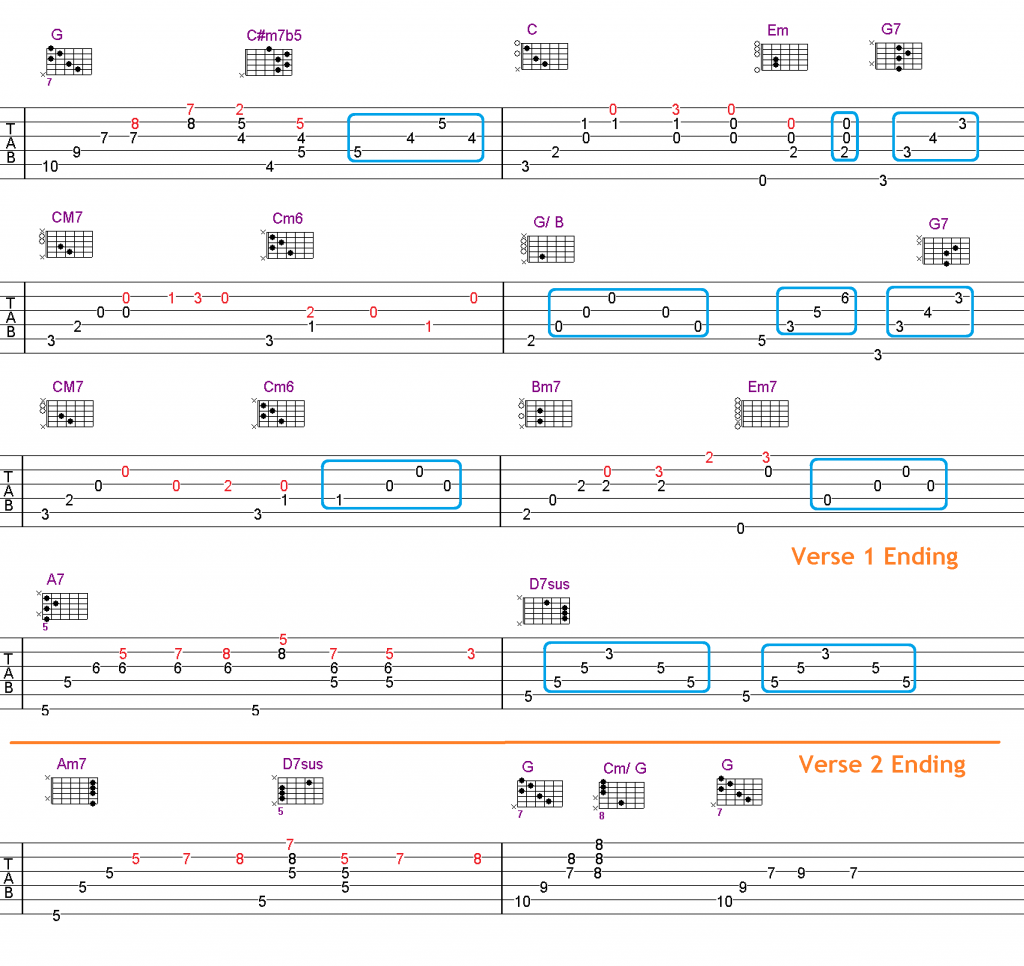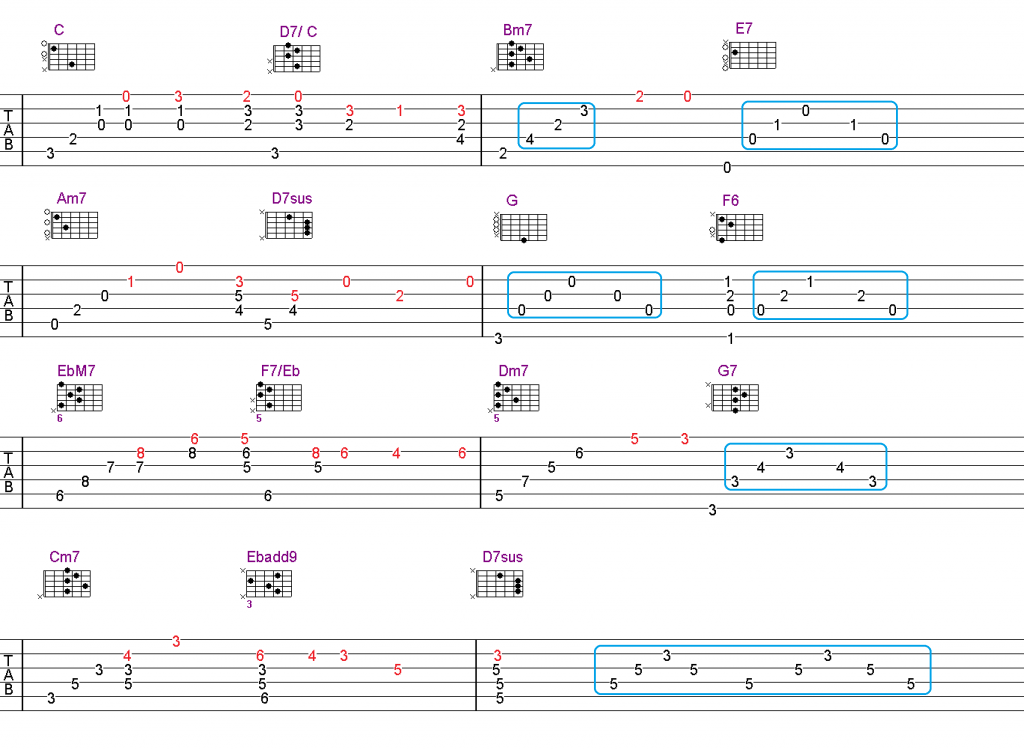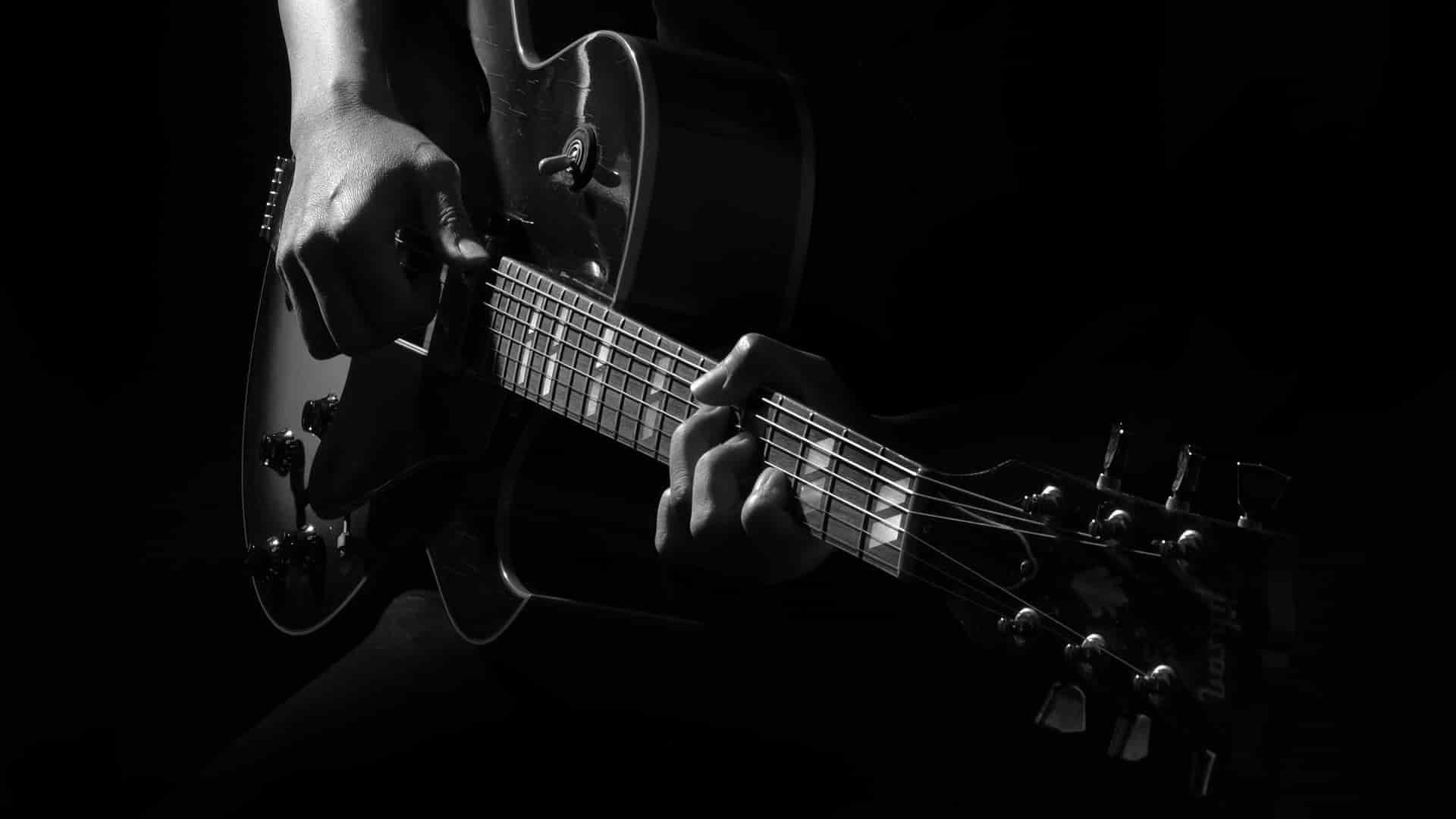GSCC Lesson 24
Past Lessons Summary and Links
If you are new to this series, here’s the links to past lessons:
| Lesson | Content |
| Lesson 1 | – Chords: C, Am, Dm, G7 |
| Lesson 2 | – Chords: Em , F |
| Lesson 3 | – Chords: G – Basic Guitar Strumming – 4 beat strum |
| Lesson 4 | – Chords: C7, Fm, D, D7 – Up Down Strum |
| Lesson 5 | – Chords: E, E7, Gm7 ,Gm – Strumming lightly on 1st few strings |
| Lesson 6 | – Chords: A, A7, G, G/B, Gm/Bb – 16 beat strum |
| Lesson 7 | – Key of G Major – Chords: Bm – Campfire Strum |
| Lesson 8 | – CAPO; Other chords in G Major – Chords: B7, B, Cm, Dm7, D/F#, Dm/F – “Chuck” Strum |
| Lesson 9 | – Plucking – Bass note of chords – 8 Beat Pluck #1 |
| Lesson 10 | – Chords: Bm7b5, F#m7b5 – Double String Pluck – Plucking Pattern For 2 Chords Bar |
| Lesson 11 | – What is 4/4 time signature – Intro to 3/4 time signature – 3/4 strumming – 3/4 plucking – Alternate bass |
| Lesson 12 | – 6/8 time signature – 6/8 strumming – 6/8 plucking – Alternate version of 6/8 plucking |
| Lesson 13 | – Create your own strumming / plucking pattern – Searching for chord charts online – Melody notes in key of C – Playing 1st instrumental song on guitar! – Melody notes in key of G – “Happy Birthday” melody in key of G |
| Lesson 14 | – Slap rhythm – Variation of slap rhythm – “Happy Birthday” solo guitar |
| Lesson 15 | – Introduction to Chord Melody Guitar Playing (solo guitar playing) – “Can’t Help Falling In Love” solo guitar |
| Lesson 16 | – Chord Melody Guitar of “月亮代表我的心” – Issues in last 2 songs we learned – Exploring beyond 1st 3 frets – CAGED system – Linking CAGED system to the notes – Fixing octave issues of last 2 songs/ playing melody at correct octave |
| Lesson 17 | – Barring and moving minor and dominant 7th chords; – Why are we learning barred chords? – Faster ways to build chords – “Let It Be” Solo Guitar |
| Lesson 18 | – Chords: Major 7th and Minor 7th – Why 7th chords? – Applying 7th chords to songs – “What A Wonderful World” Solo Guitar |
| Lesson 19 | – Chord Melody Guitar GYM (intense workout) – “Over The Rainbow” Solo Guitar in key of G |
| Lesson 20 | – Arrange chord melody guitar song in an optimal key/ put melody notes on 1st 2/3 strings – “Over the rainbow” Solo Guitar in key of C |
| Lesson 21 | – How to create rhythmic flow for chord melody guitar arrangement – The secret to chord melody guitar mastery |
| Lesson 22 | – Exam time!!! |
| Lesson 23 | – Revision before going to more advanced materials |
We had covered all the family chords and their siblings in key of C and G Major:
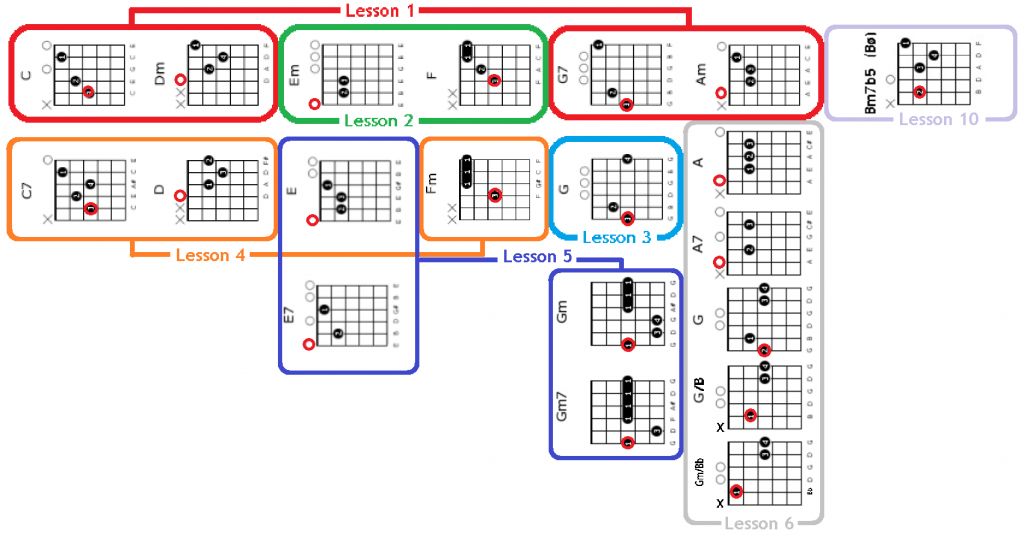
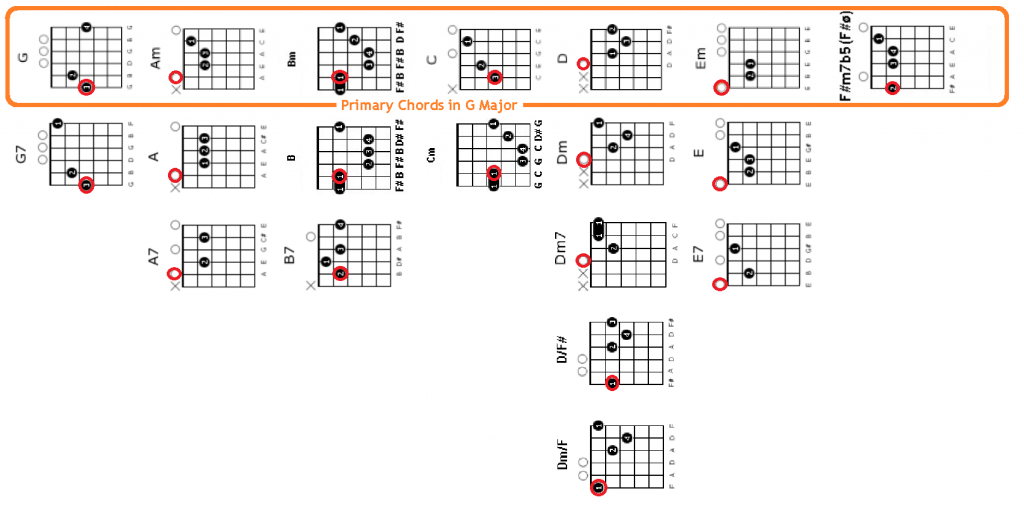
Key of C major and G major are common keys used by guitarist to play sing-along guitar.
We also looked at the guitarist best friend – CAPO , and it’s application.
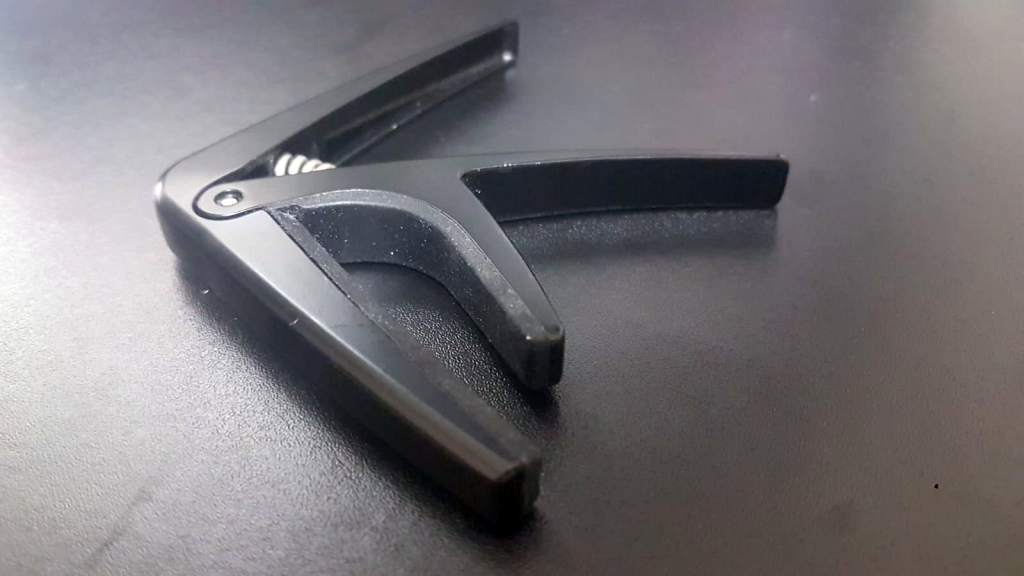
When we use the CAPO in conjunction with chords from C and G keys above , we are able to play almost every pop songs we wanted to play.
We have also looked at some basic strumming patterns:
| 1 | One strum per beat |
| 2 | Up-stroke strumming |
| 3 | Strumming lightly on first few strings |
| 4 | 16 beat strum |
| 5 | Campfire Strum |
| 6 | “Chuck” Strum |
| 7 | 3/4 Strum |
| 8 | 6/8 Strum |
And we had explored some basic pluckings.
| 1 | 8 beat pluck #1 |
| 2 | Double string pluck |
| 3 | 3/4 Pluck |
| 4 | “Alternate Bass” Pluck |
| 5 | 6/8 Pluck |
| 6 | Slap Rhythm |
And of course, we had fun learning all these songs !! They are specially produced “Karaoke for Guitar” videos (only vocal and metronome count) for you to practice your strumming / plucking:
We also learned how to put together and play chord melody guitar (solo guitar) song. Here are the main steps:
Step 1: Play the melody

Step 2: Find out the chords

Step 3: Combine the melody and the chords
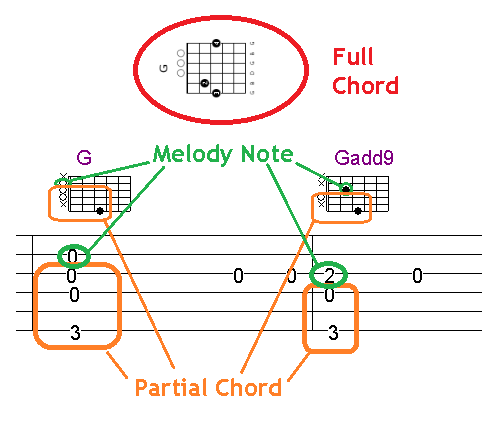

Step 4: Add in the accompaniment

Last week, we had a revision to prepare you for the more advanced topics in the following weeks. Make sure you grasp all the past knowledge before continue.
Click here to ask a question …
Chord Tones
Let’s explore chord tones. They are the individual notes in the chords. The emphasize here is to play them seperately, like melody notes, not sustaining them like plucking.
Let’s look at the chord tone for a C major chord:
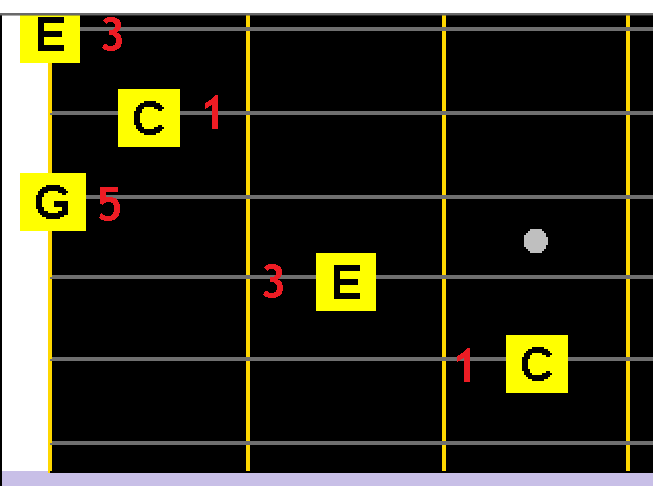
For a basic chord like C major, we have 1 , 3 , 5 which are C, E, G notes respectively. 1 is the bass note, 3 is the 3rd and 5 is the 5th.
For a 7th chord, we have the 7th note. The following is C Major 7 chord:
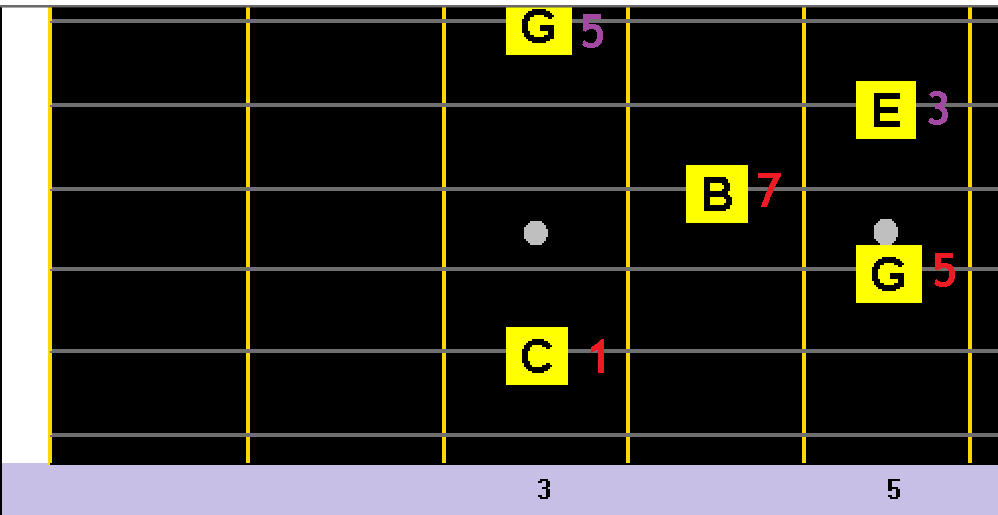
Due to the physical structure of guitar fretboard, we can’t stack all the notes like 1,3,5,7,1,3,5,7. And if all the notes are too closed together will not sound nice most of the time.
The following diagram have all the chord tines mapped out for C Major 7 chord:
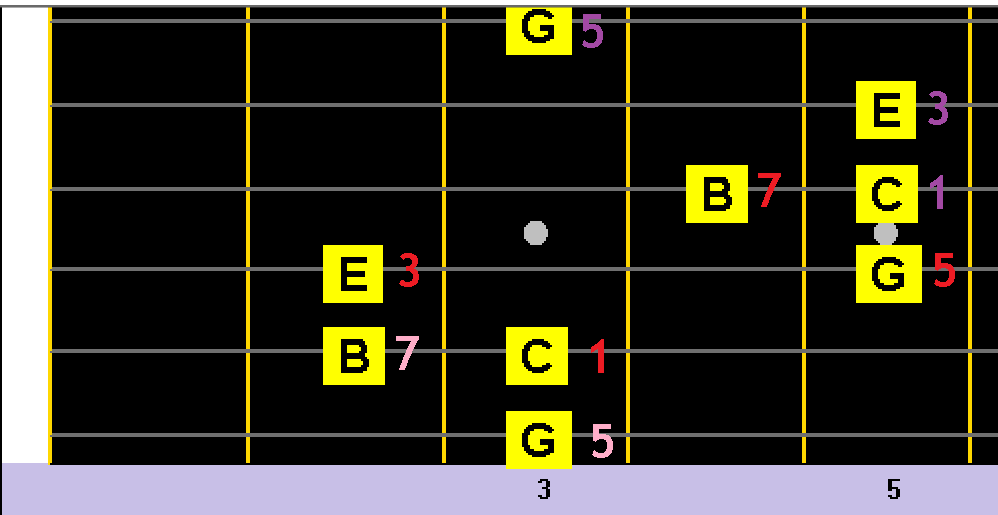
Now, let’s look at other chord types.
Here’s a dom7 chord, C7 is used as an example and shown here:
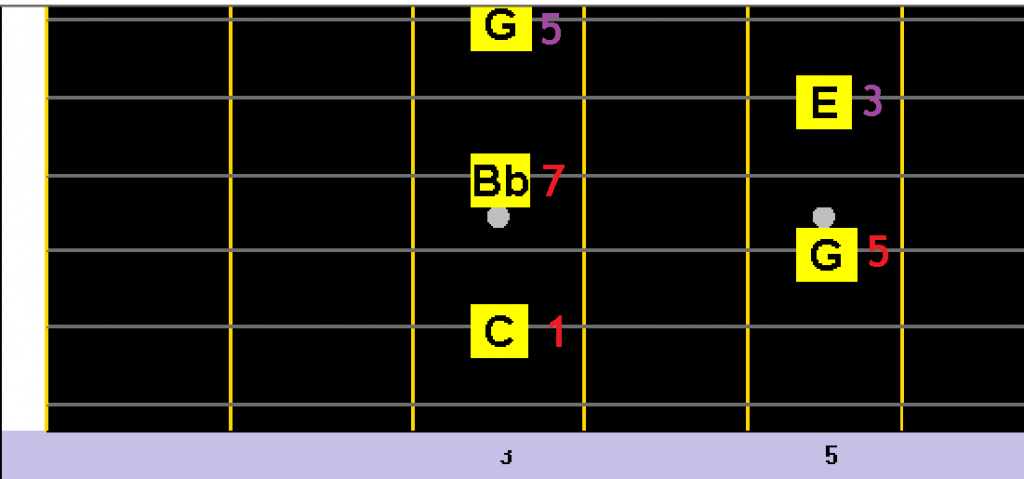
Here’s all the chord tones mapped out:
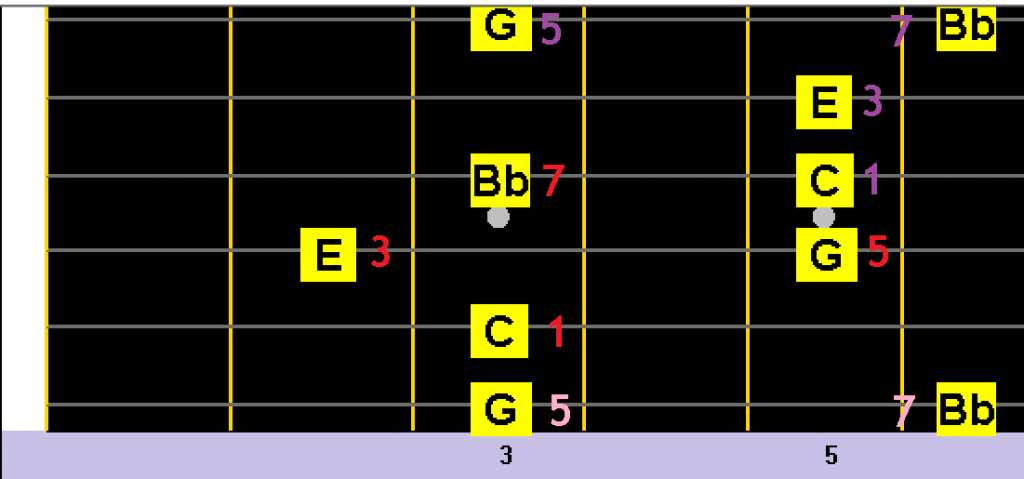
Here’s minor 7th chord, Cm7 is used as an example and shown here:
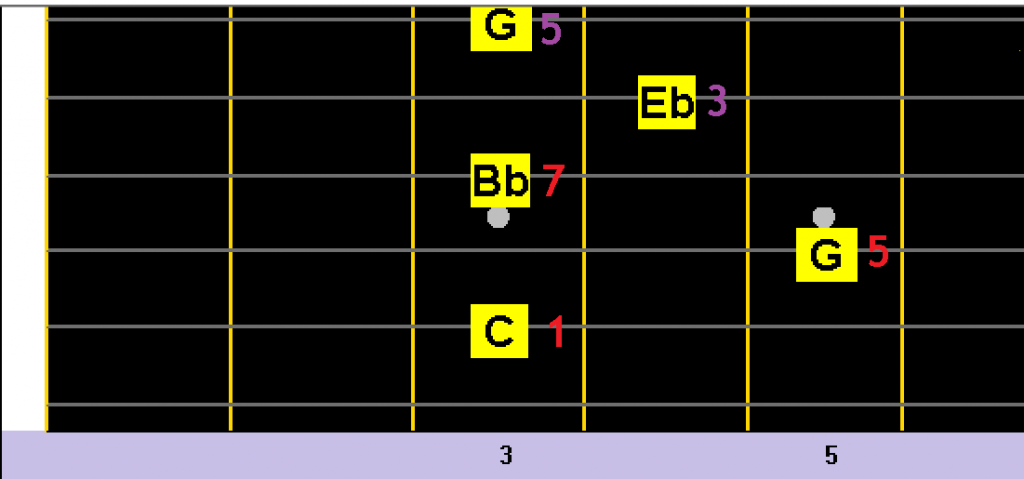
Here’s all the chord tones mapped out:

Here’s minor 7th flat 5, Cm7b5 is used as an example and shown here:
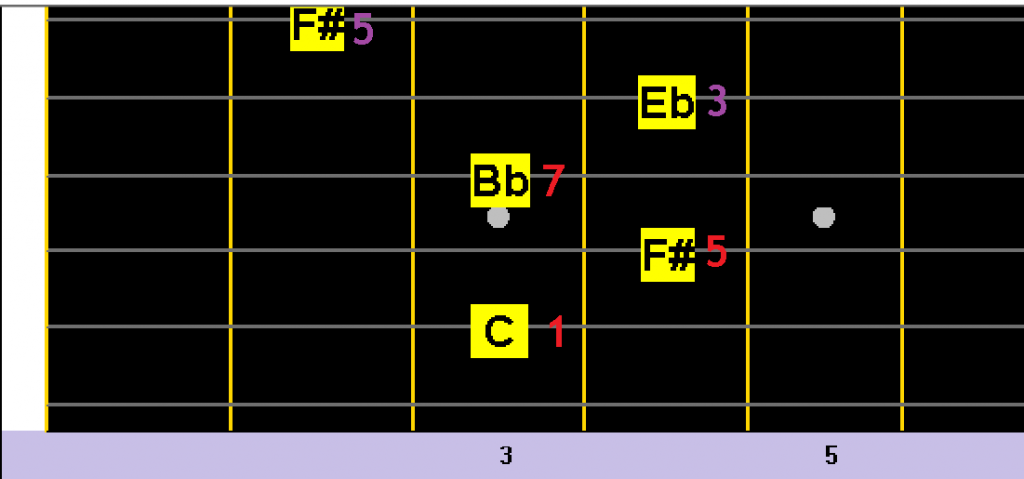
Here’s all the chord tones mapped out:
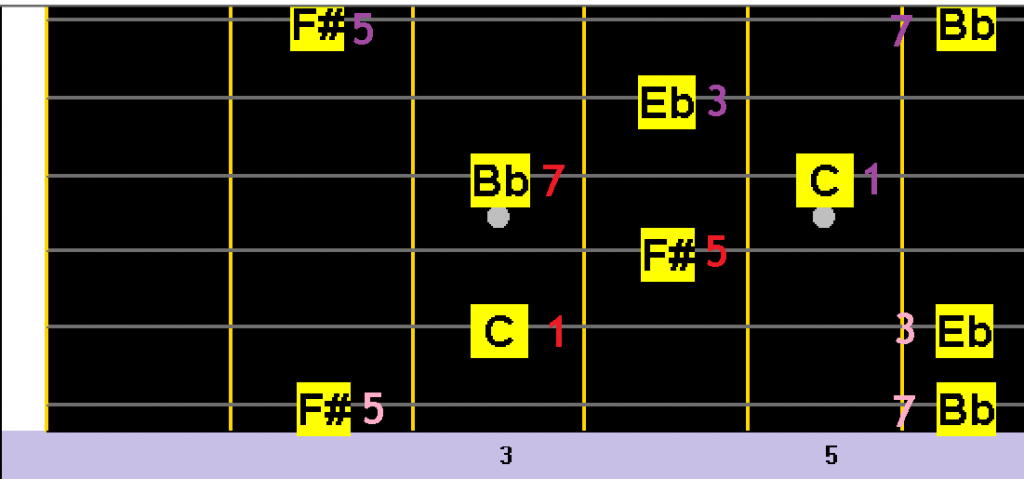
It is very important to memory all the chord tones and able to play them well. They will help in playing melody and linking chords and melody.
Click here to ask a question …
Chord Inversion
Now we know that a basic chord structure is 1,3,5 (let’s put 7th aside for now). If we rearrange them in different order, such as , 3-5-1 , 5-1-3, we created “Chord Inversion”.
Let’s look at inversion of C major chord:

They are still C major chord, just the chord tones are arranged in different order. You can also view them as using different note from the chord tones as the bass note.
The above shapes are using 5th string for bass note.
Here’s chord inversion using 6th string for bass note, using G major as example:

Here’s chord inversion using 4th string for bass note, using F major as example:

Why chord inversion?
Let’s play each inversion and compare the feeling each inversion produce. Use your heart and not your ears 😉
Each of the inversion generate different kind of emotional connection.
To me, with 1 in the bass, it is homely. When 3rd in the bass, it is very tender and the harmony is implied. When 5th is in the bass, it is strong in an alternative way… ya, i know it’s quite abstract, try to feel it and come up with your own conclusion 😉
Click here to ask a question …
Altrnate Bass
When we use the note from chord tones (other than root) as bass note, they are called inversion. If we use notes other than chord tones as bass note, they are called chord with alternate bass.
Here are some example:
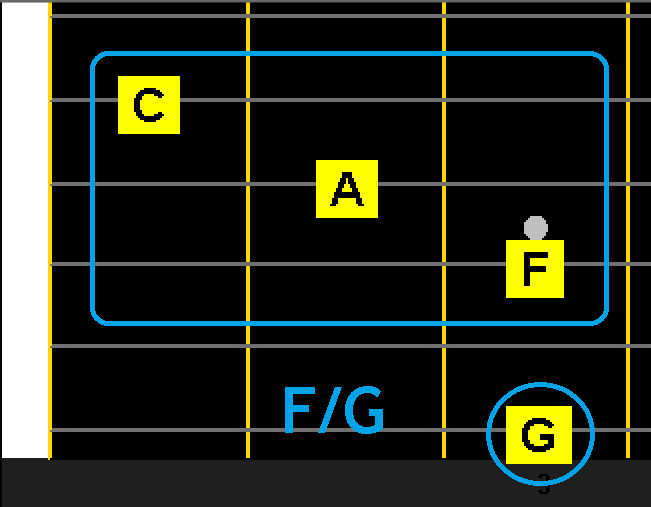
The above chord is called F/G, pronounced as F on G, because the F chord is on top with G note as the bass note.
Here’s G on F, G/F:
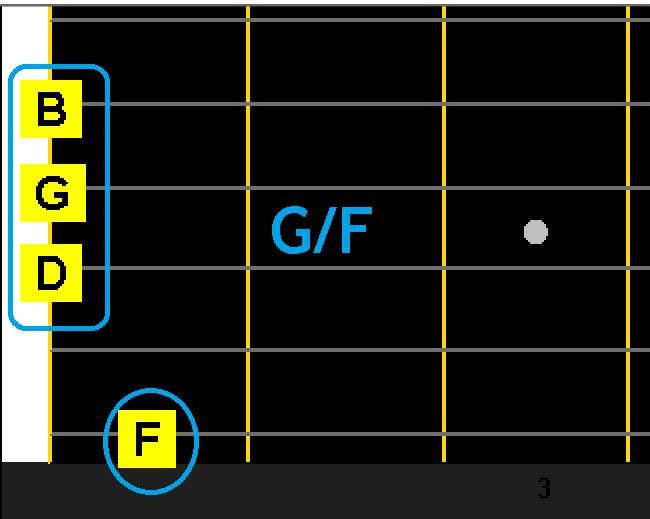
Here’s Am on F#, Am/F#:
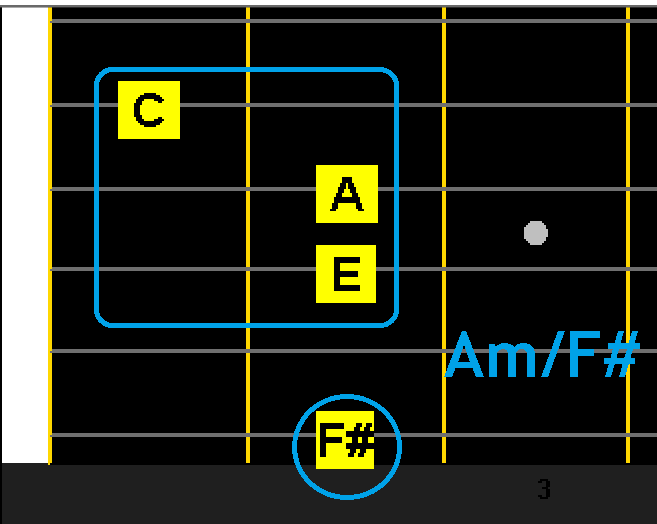
Here’s G7 on Ab, G7/Ab:
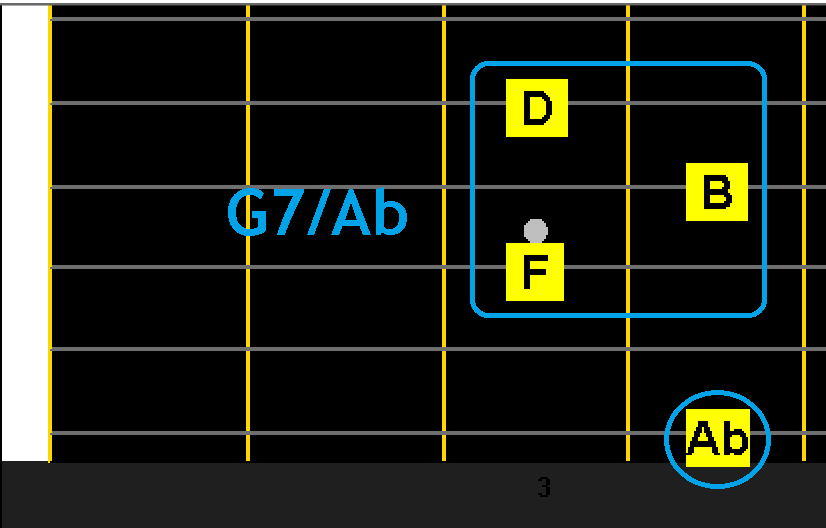
Using alternate bass is a great way to create colourful chords.
Sometimes they are also used to simplify chord naming.
Click here to ask a question …
Practice makes PERFECT! Let’s try to arrange and play another Chord Melody Song!!
Remember, couple of lessons ago, I disclosed the secret to Chord Melody Guitar mastery – that is to make your own chord melody guitar arrangement, as much as possible.
So, let’s try another classic song : “Just The Way You Are” by Billy Joel (not the Bruno Mars version 😉 ).
Again, we will go through the following steps:
Step 1: Play the melody
Step 2: Find out the chords
Step 3: Combine the melody and the chords
Step 4: Add in the accompaniment
Click here to ask a question …
Step 1: Play the melody
Let’s learn to play chord melody guitar of the song “Just The Way You Are” in the key of ? Major.
First, find out what key is the optimal one for this song.
Try ……..
A better will be G major:
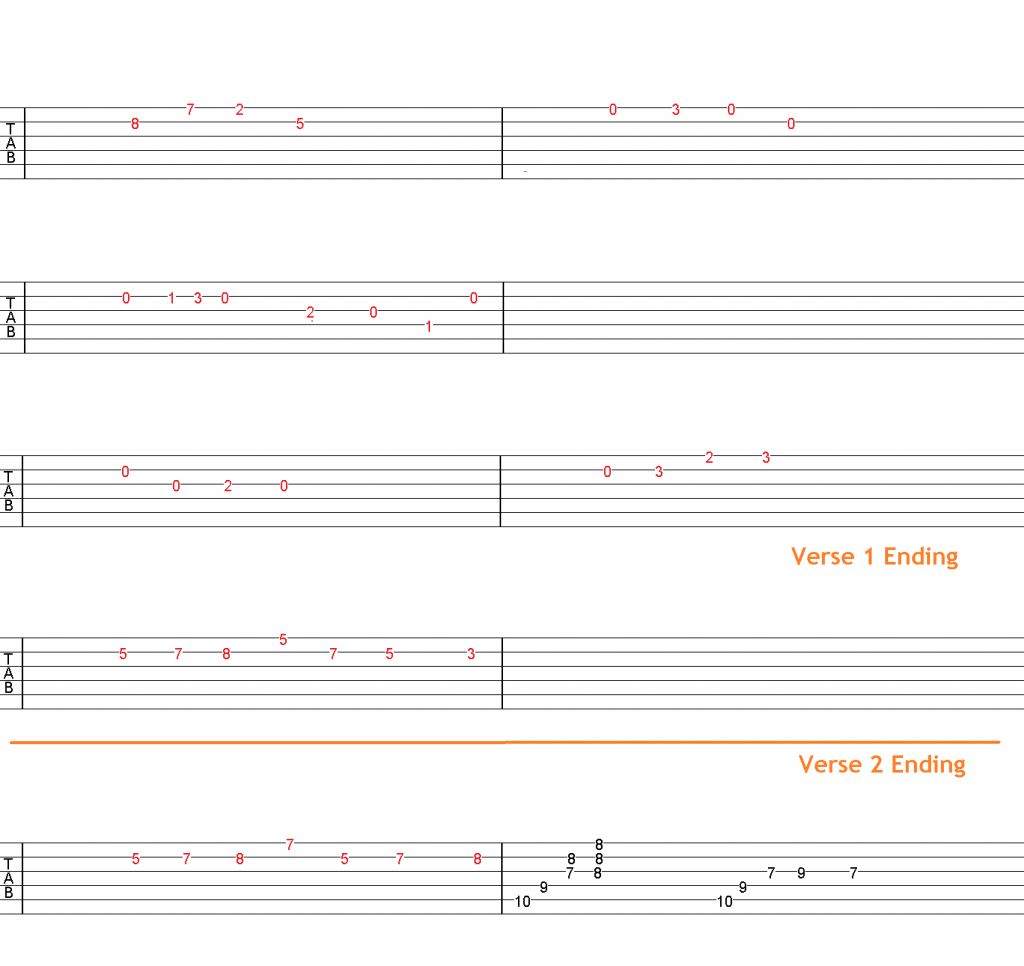
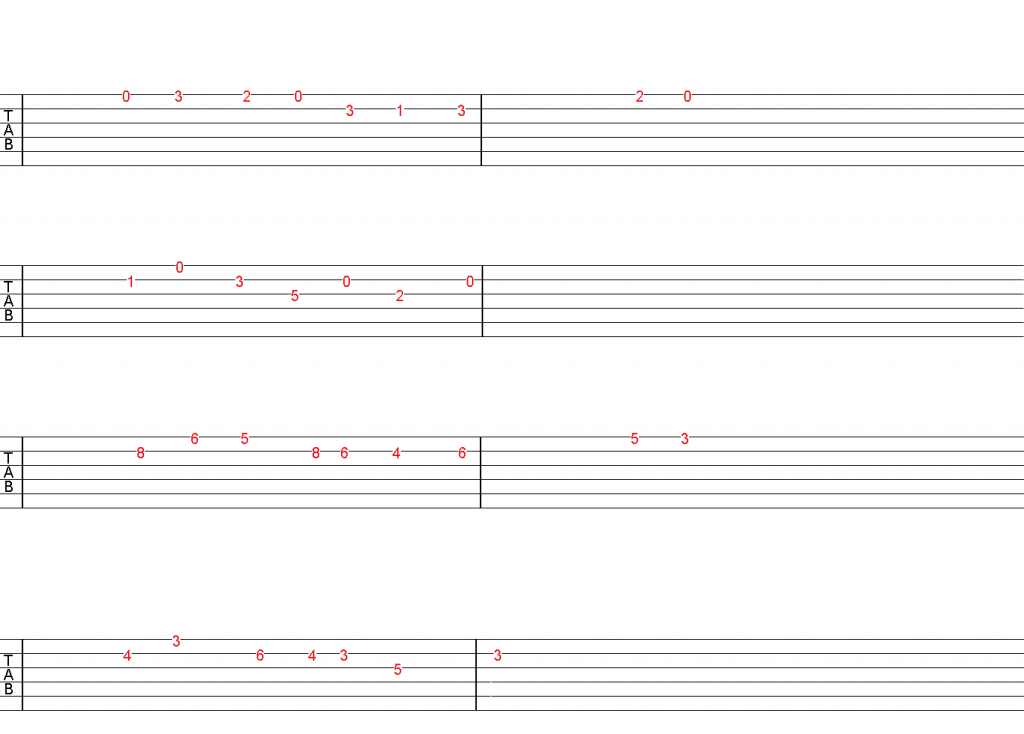
Click here to ask a question …
Step 2: Find out the chords
You can either get them online or use your ears!!
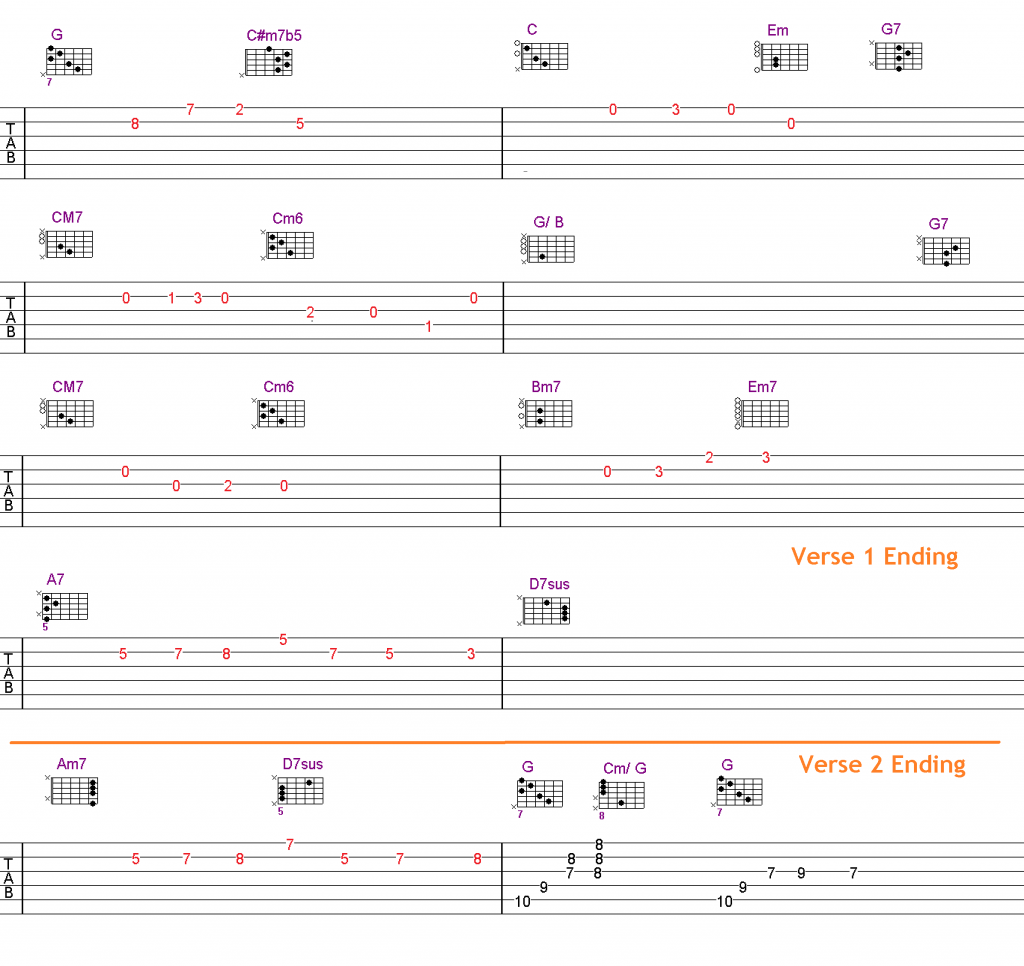
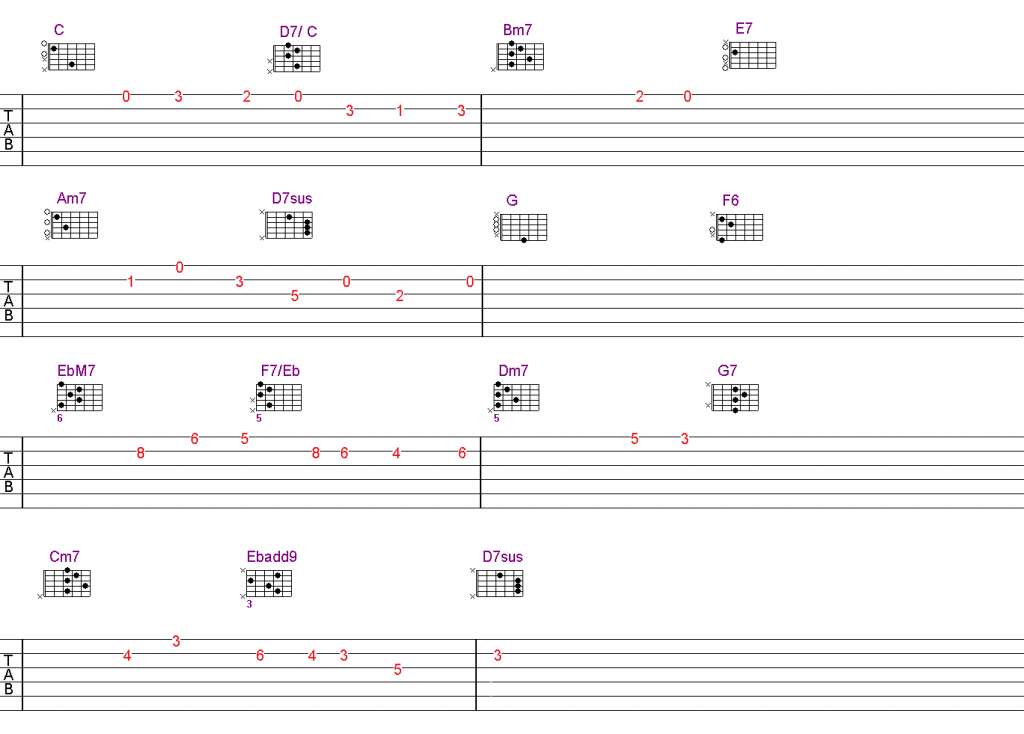
Click here to ask a question …
Step 3: Combine The Melody And The Chords
Let’s combine the melody and the chords.
As we mentioned before, the trick is to play the chords “below” the melody notes. The melody note will be the higher notes of the “chord”. This means we are gonna play part of the chords, below the melody.

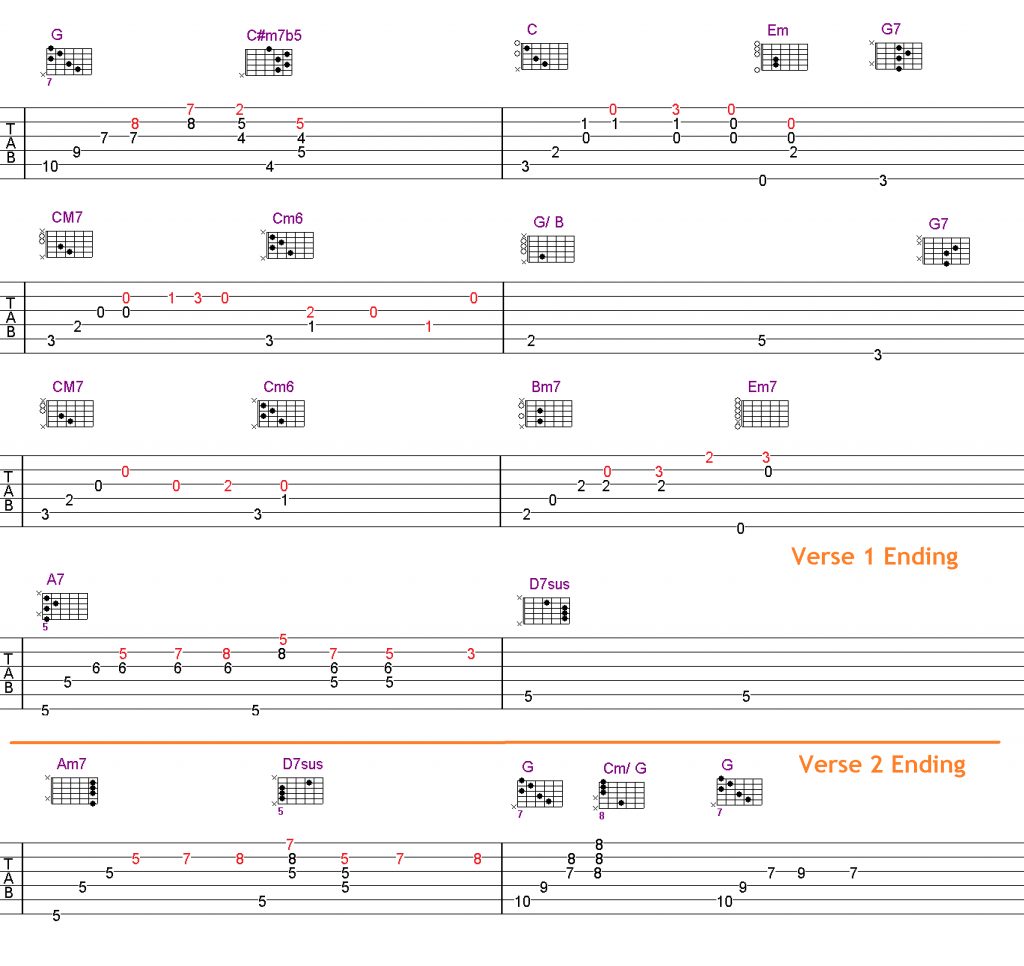
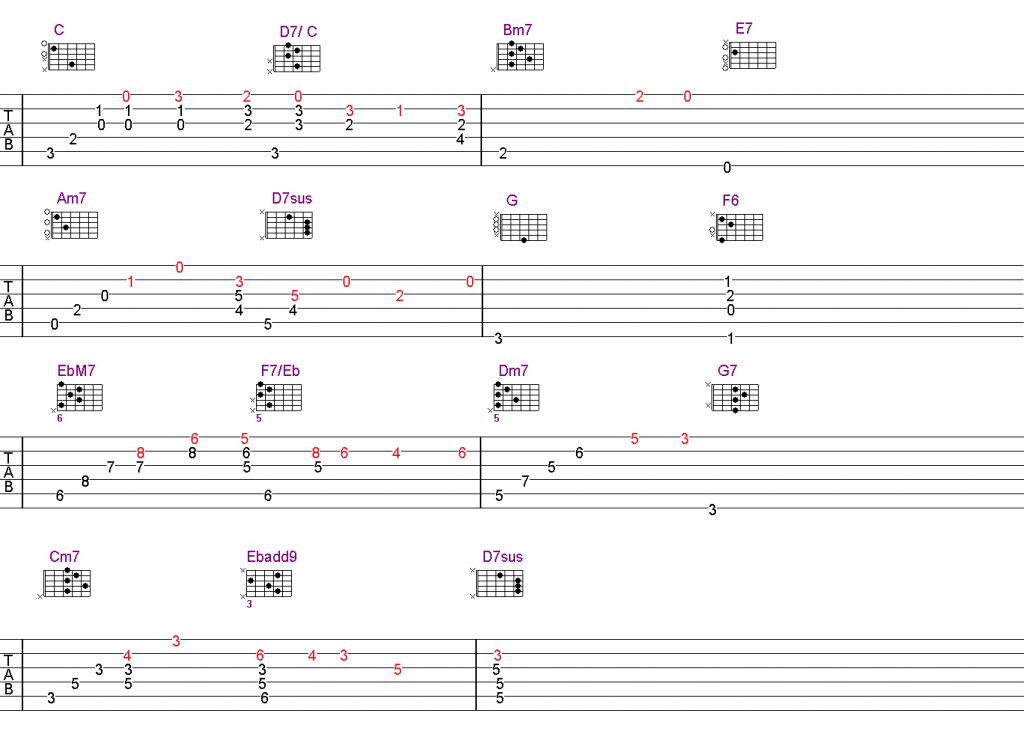
Click here to ask a question …
Step 4: Add In The Accompaniment
Yeah! We have the melody and the chords!!
Let’s make it more complete by filling in the gap between the melody.
We can fill in the gap by playing the plucking accompaniment just like we are accompanying someone to sing:
